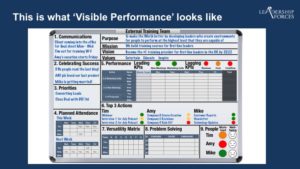When Peter Thiel invested $150m in Airbnb, the founder asked him, ‘What is the most important piece of advice for us?’
His response – ‘Don’t fuck up the culture…’
When asked to elaborate on this, he said one of the reasons he invested in Airbnb was the culture. But he had a cynical view that it was inevitable once a company gets to a certain size they ‘fuck it up.’
So how do you build culture? How do you ‘get it right’ from the start?
CEO of South-West Airlines, Herb Kelleher, is a great example of a leader who understands the value of culture. His view is that…
If the employees come first, then they’re happy…. A motivated employee treats the customer well. The customer is happy so they keep coming back, which pleases the shareholders. It’s not one of the enduring green mysteries of all time, it is just the way it works.
Culture is what people do when no-one is looking.
It is the reflection of your leadership. Horrible cultures are created by poor leaders.
So how do build culture?
It is about ‘living the values – leading by example – walking the talk’ in everything that you do.
In the nuclear industry, safety is important. At Urenco, leaders made this clear by talking about it at the start of every meeting. This is how you create culture.
Everyone from the CEO to the guys on the shop-floor have a role in creating the organisational culture because it is their cumulative behaviour that makes the culture what it is.
There are two parts to this.
1. Recruit the right people.
2. Create the environment for them to perform.
Most companies will advertise a job asking for a combination of ‘skills and experience’. They will then interview someone asking them questions like ‘tell me a time when you were under pressure…’
This sets a low barrier for entry because anyone can perform in an interview – it is only one hour! How do you know if they will make a good fit for your organisation?
This is where your values come in to play. For example, if you want employees to be able to ‘think on their feet’ in the role, challenge them to do that in your recruitment process.
Ask them to defend a view like ‘torture is acceptable in some cases’ and see how they respond to some challenge. Do they wither under pressure or do they stick to their guns?
Define the people you are looking to recruit by defining your culture. Use it to inform who you recruit to your team.
Then, create the environment for them to perform
1. Get the Purpose, Mission and Vision in place. Make them clear and make sure everyone can explain what they are. If they can’t, you haven’t communicated them well enough. If they’re not clear – how do you know if everyone is working on the right thing?
2. Measure the right things. What gets measured gets done so if you want your people to work as a team, don’t measure them by individual performance.
3. Create Clarity. Build a performance centre and have a conversation about the things on the board everyday.
4. Deep Relationships. Build deep relationships with your people. You can’t leverage shallow relationships – so how well do you know your people?
5. Standards. Define what good looks like. Make sure everyone does the same thing in the same way. Create consistency.
6. Positive Attitude to Failure. People can only control the process – not the outcome. Focus on helping to improve the process. If you make people accountable for the outcome – you are asking them to control something that they can’t. This creates stress.
7. Challenge and Feedback. Lead with humility, encourage people to challenge you. Be comfortable with the fact that no one has all the answers.
8. Decision-Making. Value speed over accuracy. Procrastination is a form of decision-making. You are ‘choosing to burn time’. Who can afford to do that?
Clarfiy what your culture looks like. Use Netflix as an example.

